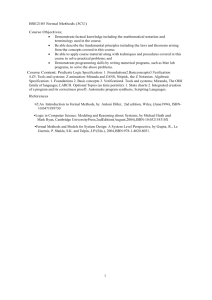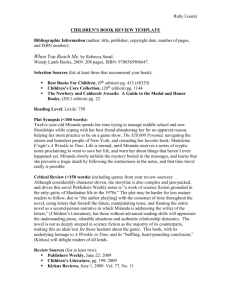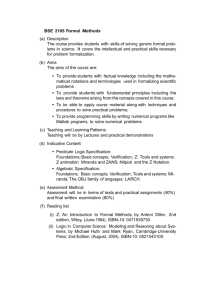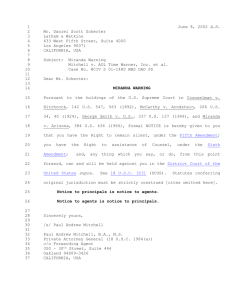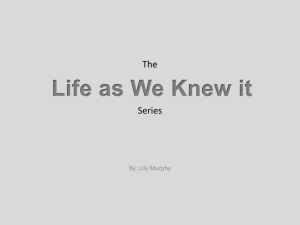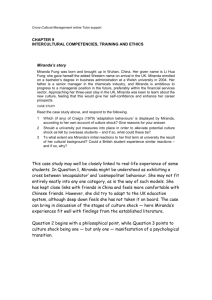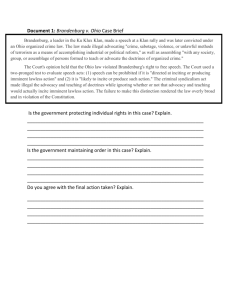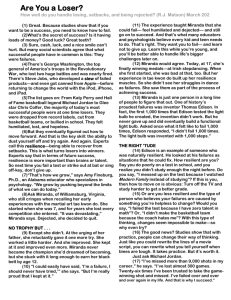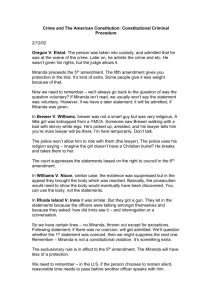Miranda v. Arizona: Rebalancing Rights and Responsibilities
advertisement
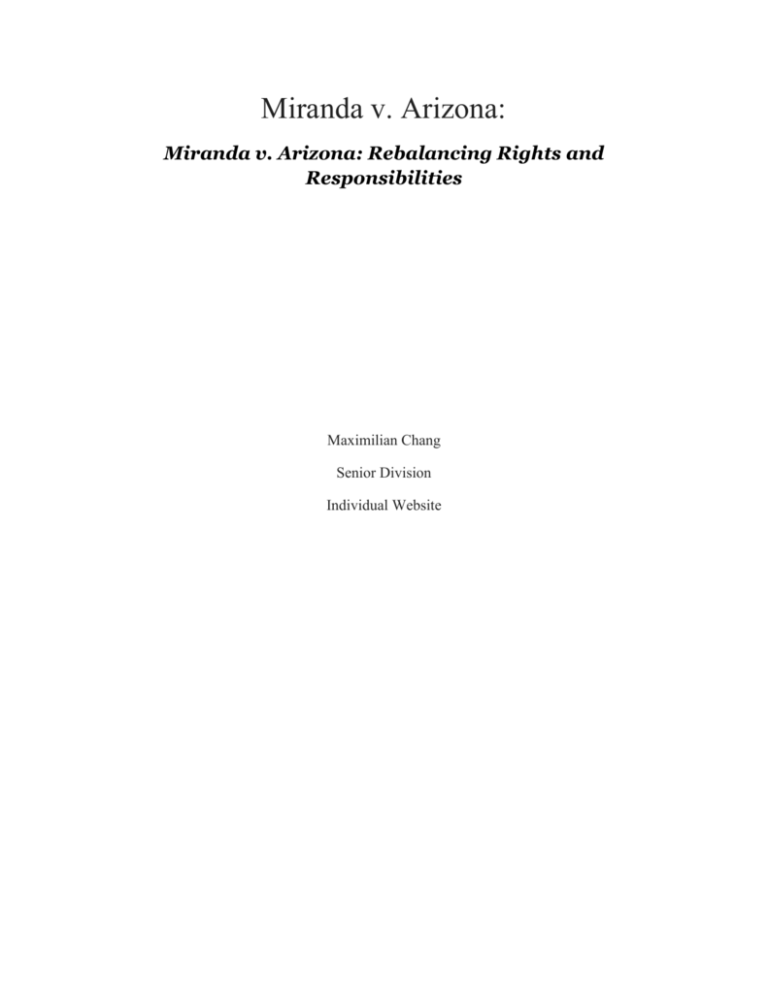
Miranda v. Arizona: Miranda v. Arizona: Rebalancing Rights and Responsibilities Maximilian Chang Senior Division Individual Website In my high school Mock Trial club last year, I was the pretrial attorney and had to prepare an argument based on the case law surrounding Miranda v. Arizona. I became fascinated with the implications of the ruling, and when I read this year’s NHD theme was “Rights and Responsibilities,” I saw an opportunity to fulfill my curiosity on this historical event. I started my research by reading the opinions of the Supreme Court ruling in Miranda v. Arizona. From those documents, I was able to discover the concerns prompting the Court to rule in favor of Miranda and the controversies regarding the Miranda ruling. I then obtained information to support or dispute the claims in those opinions. I also received direction from my interviewees including a federal judge, two prosecutors, a criminal defense attorney, and a police officer who all agreed to be interviewed by phone, video camera, or email. They shared valuable professional opinions on the case, and from there, I continued my research to come up with my thesis and analysis. Having background in web development, I understood the potential of using web as the medium for this project. I wanted to take advantage of the web’s ability to deliver a plethora of information in an easy-to-read format. To start the project, I created only the most essential parts: the thesis, context, facts, and conclusion. From there, I created additional pages to give the reader an easy-to-follow, in-depth presentation of the facts and analysis so that the website would essentially become a continuous storyboard encompassing events from the 60’s to the present. With rights come responsibilities. By examining the initial implications of Miranda Rights and its evolution over time, I probed the conflict, correlation, and ultimately the delicate balance between rights and responsibilities after a significant event impacted the entire nation. On the surface, the Miranda Rights appeared to confer a new right on one party (the suspect) and impose a new responsibility on another party (the law enforcement). Miranda v. Arizona appeared to threaten the rights-responsibilities balance of our society and induce lawlessness and chaos. Such was not the case. This project examines the facts of the Miranda case, origin of the Miranda Rights rulings, public reactions to the rulings, development of Miranda Rights over time, and why our democratic society has remained whole after the Miranda v. Arizona decision. This project establishes that this nation, under the Constitution, inherently drives to continually redistribute the rights and responsibilities of its constituents every time an existing balance is disturbed. The ideals of the Constitution, which Miranda Rights perpetuate, guarantee its citizens their inalienable rights and serves as the very foundation for the long-term sustainability of the post Miranda rights era as government, law enforcement, and citizens adapt to reach a new balance in rights and responsibilities. The Miranda decision and its evolving legal interpretation over time are a great illustration of the continual rebalancing between rights and responsibilities in the history of this nation.
